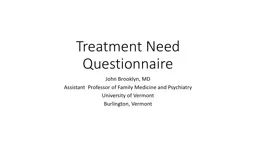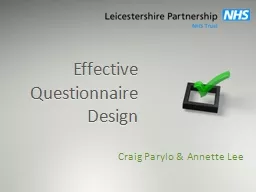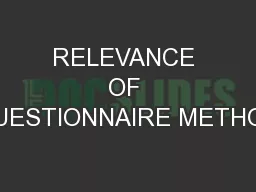PPT-Treatment Need Questionnaire
Author : faustina-dinatale | Published Date : 2018-12-13
John Brooklyn MD Assistant Professor of Family Medicine and Psychiatry University of Vermont Burlington Vermont Hub amp Spoke Model Integrated Health Systems for
Presentation Embed Code
Download Presentation
Download Presentation The PPT/PDF document "Treatment Need Questionnaire" is the property of its rightful owner. Permission is granted to download and print the materials on this website for personal, non-commercial use only, and to display it on your personal computer provided you do not modify the materials and that you retain all copyright notices contained in the materials. By downloading content from our website, you accept the terms of this agreement.
Treatment Need Questionnaire: Transcript
Download Rules Of Document
"Treatment Need Questionnaire"The content belongs to its owner. You may download and print it for personal use, without modification, and keep all copyright notices. By downloading, you agree to these terms.
Related Documents














